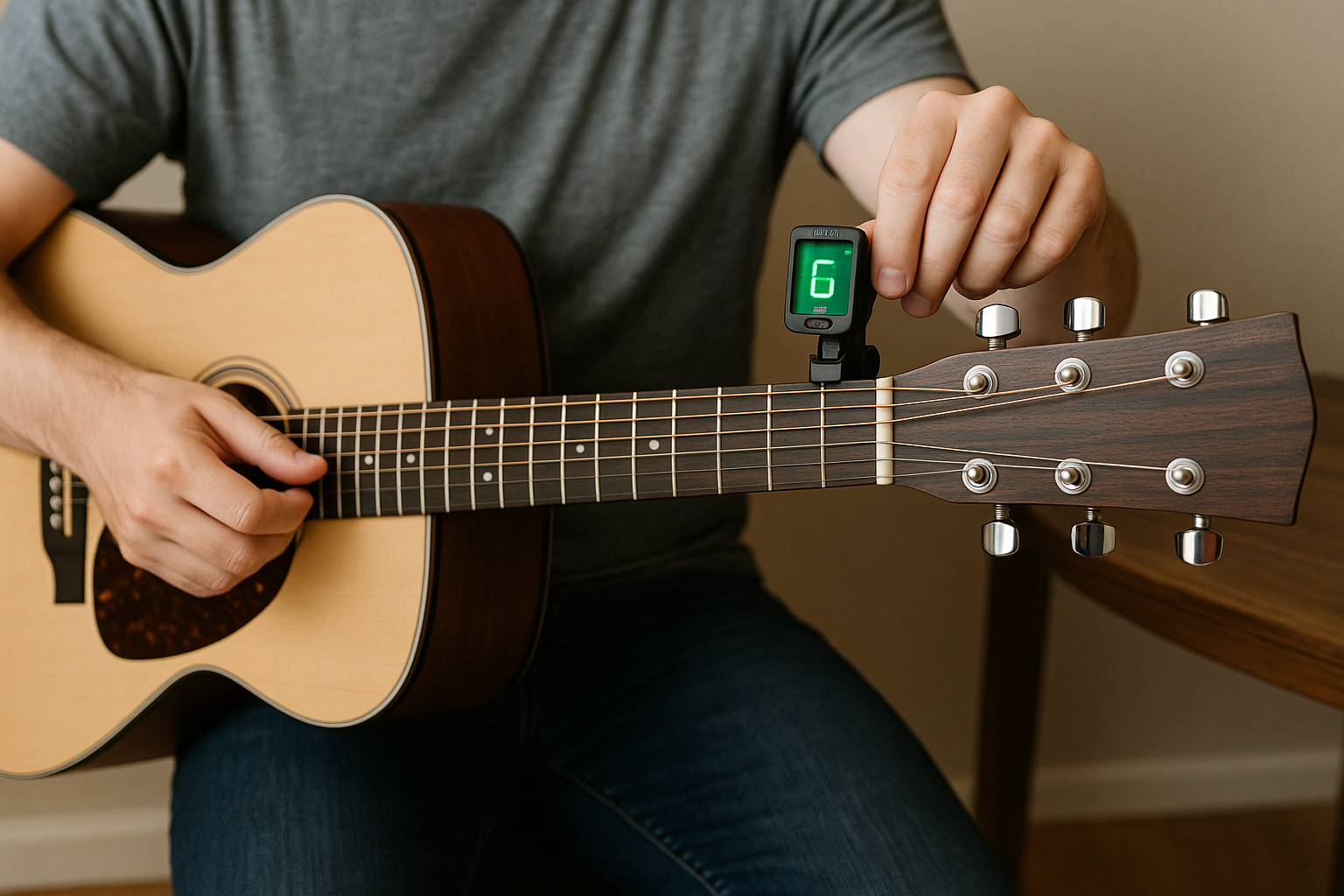One of the first and most important skills every musician must learn is how to tune their instrument. No matter how skilled you are, if your instrument is out of tune, your music will sound unpleasant. The good news is that tuning isn’t as difficult as it may seem, and with modern tools, even complete beginners can do it quickly and accurately.
In this article, we’ll explore the basics of tuning, common methods for different instruments, and practical tips that will help you train your ear and build confidence from day one.
Why Tuning Matters
Tuning ensures that your instrument produces the correct pitches. When your instrument is in tune:
- Notes sound harmonious when played together
- Chords are accurate and pleasant to the ear
- You can play with other musicians without clashing sounds
- Your practice time is productive instead of frustrating
Playing on an out-of-tune instrument not only sounds bad but can also confuse your ear, making it harder to develop musical accuracy.
Tools for Beginners
In the past, musicians had to rely only on their ears. Today, beginners can take advantage of several tools that make tuning much easier.
Electronic tuners: Small devices or apps that show whether your note is flat (too low) or sharp (too high). Perfect for beginners because they give instant feedback.
Tuning apps: Free apps like GuitarTuna, Pano Tuner, or Cleartune turn your smartphone into a reliable tuner.
Pitch pipes or tuning forks: Simple tools that produce a reference note for you to match. While slightly more advanced, they help you develop your ear.
Built-in tuners: Many digital keyboards, electric guitars, and tuners for violins or ukuleles come with built-in features that guide you.
How to Tune Different Instruments
Guitar
Guitars have six strings, and the standard tuning is E-A-D-G-B-E, from the thickest to the thinnest string.
Steps to tune a guitar as a beginner:
- Use a tuner app or device.
- Play the low E string (6th string). The tuner will tell you if it’s flat or sharp.
- Adjust the tuning peg slowly until the tuner shows it’s in tune.
- Repeat with each string in order: A, D, G, B, E.
Pro tip: Always tune up to the note rather than down, to keep the string tension stable.
Piano
Acoustic pianos require professional tuning, but beginners with digital pianos or keyboards don’t have to worry—these instruments stay in tune automatically. However, you should learn to recognize if an acoustic piano is out of tune, especially when practicing at home or in a school.
Violin
The violin has four strings tuned to G, D, A, and E. Beginners often use fine tuners (small screws near the tailpiece) instead of the larger tuning pegs, as they allow more precise adjustments. Use an electronic tuner or app, and always tune gently to avoid breaking strings.
Ukulele
The standard tuning for a ukulele is G-C-E-A. Apps like UkuleleTuner make the process simple. Pluck each string one at a time and adjust until the note matches the target.
Voice
Yes, even singers need to “tune” their instrument—their voice. For singers, tuning means training the ear to match pitch. A piano app or tuner can help you check if you’re singing the correct note. Beginners should practice singing one note, checking it on the tuner, and adjusting until they match.
Developing Your Ear
While tuners are amazing tools, you should also practice tuning by ear over time. This will sharpen your musicality and independence.
Exercises to improve ear tuning:
- Play a note on a piano or tuner app, then try to sing or play it back.
- Practice matching intervals, such as the difference between C and G.
- Record yourself tuning by ear and compare with an electronic tuner.
Over time, your brain will begin to recognize when a note sounds sharp or flat without needing a device.
Common Beginner Mistakes
- Overturning the pegs: Turning too quickly or too much can break strings, especially on violins and guitars. Always make small adjustments.
- Not checking all strings: Some beginners tune one string and forget to check the rest. Every string must be tuned.
- Ignoring the environment: Heat and humidity can cause instruments to go out of tune quickly. Always check before playing.
- Relying only on tuners: Great for starting out, but don’t forget to also train your ear.
- Skipping tuning altogether: Some beginners think tuning is optional—it’s not. Playing out of tune will hurt your progress.
Tips for Easier Tuning
- Tune your instrument every time before practice.
- Start with one string at a time and don’t rush.
- Use a quiet space so the tuner can pick up your sound clearly.
- Keep extra strings handy—sometimes beginners break one while learning to tune, and that’s okay.
- If you’re unsure, ask a friend, teacher, or even a video tutorial to check your work.
Why Tuning Builds Confidence
Learning to tune your instrument isn’t just a technical step—it’s part of becoming a confident musician. Tuning teaches you to listen carefully, trust your ear, and take responsibility for your sound. Once you master this skill, you’ll feel more comfortable practicing and playing with others, knowing your instrument is ready.
Final Thoughts: Start Every Session in Tune
Tuning may seem intimidating at first, but it quickly becomes second nature. Thanks to tuners, apps, and clear guidance, beginners can learn this skill almost immediately. The more you practice, the easier it gets, and soon you’ll tune your instrument in just a minute or two.
Remember: great music starts with being in tune. Whether you’re strumming your first chord, playing your first scale, or singing your first note, tuning ensures that your sound is clear, accurate, and enjoyable. Master this small habit early, and you’ll set yourself up for success in every step of your musical journey.
